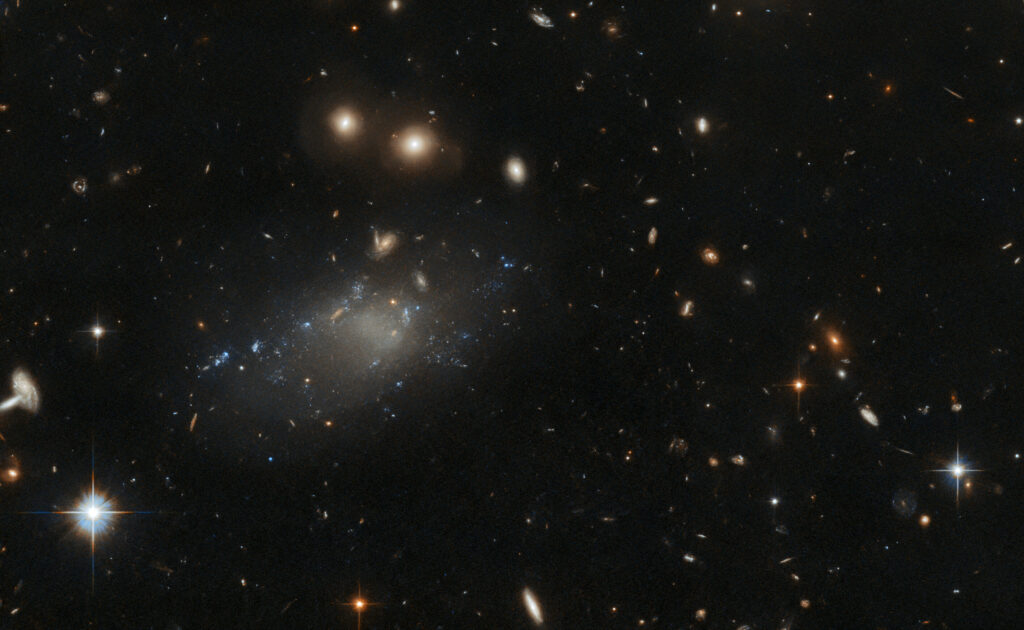The presented image of the Hubble Space Telescope shows a section of the sky in the direction of the constellation Hydra. If you look closely, you can see a foggy object in the left part of the frame. But this is not a classic cluster of gas-dust clouds like the famous Orion nebula. Hubble photographed the galaxy GAMA 526784.

GAMA 526784 is located at a distance of approximately 4 billion light years from Earth and is classified as an ultra-diffuse galaxy. Such objects may have the same size and mass as the Milky Way, but at the same time contain orders of fewer stars. This is due to the fact that such galaxies have completely exhausted the gas reserves that allow them to form new luminaries.
Another feature of ultra-diffuse galaxies is a large “spread” of the amount of dark matter. Astronomers know both ultra-diffuse galaxies with almost complete absence of dark matter, and vice versa, almost entirely consisting of it. Another oddity of this class of objects is the anomalous abundance of bright globular clusters.
The GAMA 526784 image was taken using the ACS camera installed on board the Hubble. This instrument has played a key role in some of the telescope’s most impressive scientific results, including capturing the Hubble Ultra Deep Field. ACS also photographed Pluto before the New Horizons mission, observed gravitational lenses, and discovered the first fully formed galaxies in the early Universe.
According to https://esahubble.org

